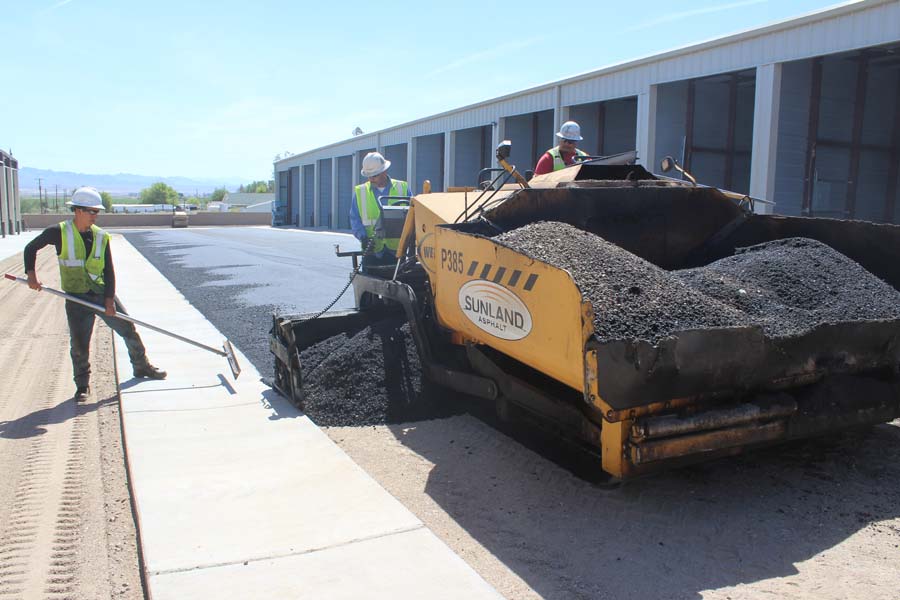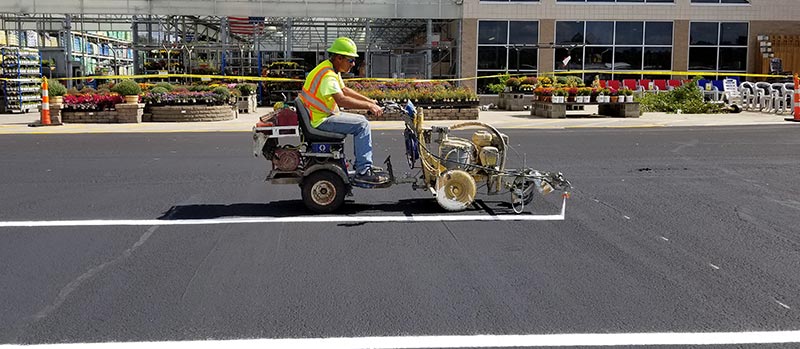Some Known Details About A1 Professional Asphalt & Sealing Llc
Some Known Details About A1 Professional Asphalt & Sealing Llc
Blog Article
Excitement About A1 Professional Asphalt & Sealing Llc
Table of ContentsThe Main Principles Of A1 Professional Asphalt & Sealing Llc The smart Trick of A1 Professional Asphalt & Sealing Llc That Nobody is Talking AboutSome Of A1 Professional Asphalt & Sealing LlcThe A1 Professional Asphalt & Sealing Llc DiariesThe Best Strategy To Use For A1 Professional Asphalt & Sealing Llc

The oil in a cars and truck engine is not just oil. The REOB has all the ingredients that were in the waste oil as well as the wear metals from the engine (mostly iron and copper).
Nevertheless, by making numerous blends utilizing various REOB samples and different asphalt binders, the variants greatly can be averaged out. A number of States provided examples of known REOB composition to TFHRC scientists, who examined the examples to contrast the percent of added (known) REOB to the discovered (examined) quantity. The evaluations revealed a comparable portion of included and found REOB.
Examine This Report on A1 Professional Asphalt & Sealing Llc
None of those States understood that the asphalt they were acquiring included REOB. One State insisted its examples had no REOB - https://dc-washington.cataloxy.us/firms/a1asphaltpro.com.htm.
Of the 1,532 samples tested, 12 percent contained REOB, and some contained considerably high levels of it at 1020 percent. The highest degree was 34 percent in an example from Texas, which TxDOT had actually utilized in a patching substance. This testing additionally disclosed the visibility of phosphoric acid in 11 percent of the examples, and 2 percent included ground tire rubber.
2 years back at TRB's annual conference, the Federal scientists held an REOB workshop and offered the searchings for of their laboratory analyses to a standing room-only group. Although some agencies do not particularly ban REOB, they do enforce physical examinations that avert its useeffectively a restriction. asphalt repairs. Others do not outlaw it by specification, yet have arrangements with asphalt distributors to prevent using REOB
A Biased View of A1 Professional Asphalt & Sealing Llc
A handful do enable REOB, some within particular limits. Ohio and Texas restriction levels to much less than 5 percent of the asphalt. To develop a trustworthy test technique that all States can utilize, the TFHRC scientists established a round-robin examination strategy. The participants are 11 State highway companies (Illinois, Massachusetts, Minnesota, Mississippi, Montana, North Carolina, Oklahoma, South Carolina, Texas, Vermont, and Wyoming), 2 independent screening laboratories, the Ministry of Transportation in Ontario, Queen's University in Ontario, and an Ontario paving service provider.
In total amount, the scientists prepared and delivered 720 blends. The participants are examining the samples independently using the guidelines given by the TFHRC researchers. The round-robin testing is virtually completed, and TFHRC is in the procedure of gathering the outcomes. The result will certainly be a proposed AASHTO test technique that any kind of State can take on and use (what is cold mix asphalt).
The sidewalk with REOB, which lies 0.6 mile (1 kilometer) from the pavement without REOB, has identical subgrade, website traffic density, and climate. Nonetheless, the section of Highway655 with 5 to 10 percent REOB showed substantial cracking. In this example, the presence of REOB was the recognized root cause of breaking at a low temperatures.
"In our experience in Canada, even little quantities of 23 percent can be a trouble." Likewise, a section of test pavement in Minnesota (MN1-4) discovered to have REOB likewise cracked too soon. The sidewalk executed well for the very first 3 to 4 years, yet after that started to split. This sidewalk is likewise based on low temperature levels.
Some Known Questions About A1 Professional Asphalt & Sealing Llc.
The examinations were not extensive, but they showed that at levels of 6 percent or more, the tensile strength of the asphalt dropped substantially. At a degree of 3.5 percent REOB, the variant in the physical test techniques was above the effect of REOB. It was challenging for scientists to evaluate whether REOB was existing. https://www.quora.com/profile/John-Tally-19.

One binder web link parameter considered is the distinction in between the low temperature critical specification temperature for rigidity (S) in the flexing light beam rheometer and the flexing light beam rheometer creep incline (m-value) kept in mind as Tcritical. TC = TC (S) TC (m-value). Analysis of this criterion is still ongoing. 2 independent research groups, one from AASHTO and the other from the Asphalt Institute, wrapped up that even more study is required on making use of REOB in asphalt.
Previously, all asphalt screening measured design homes such as rigidity. These tests do not show what materials had been included to the asphalt.

Get This Report on A1 Professional Asphalt & Sealing Llc
These outcomes show there are weaknesses in the standardized engineering testing procedures that might be manipulated. The producer might have an economic advantage and the product passes all the standardized tests, yet the item might not be advantageous to guaranteeing long-lasting performance. To resolve this concern and the growth of new asphalt additives and extenders, TFHRC is beginning a research program to use portable spectroscopic tools, x-ray fluorescence spectroscopy, and Fourier change infrared spectroscopy to allow evaluations to be done in the field rather than having to take examples back to the lab.
Report this page